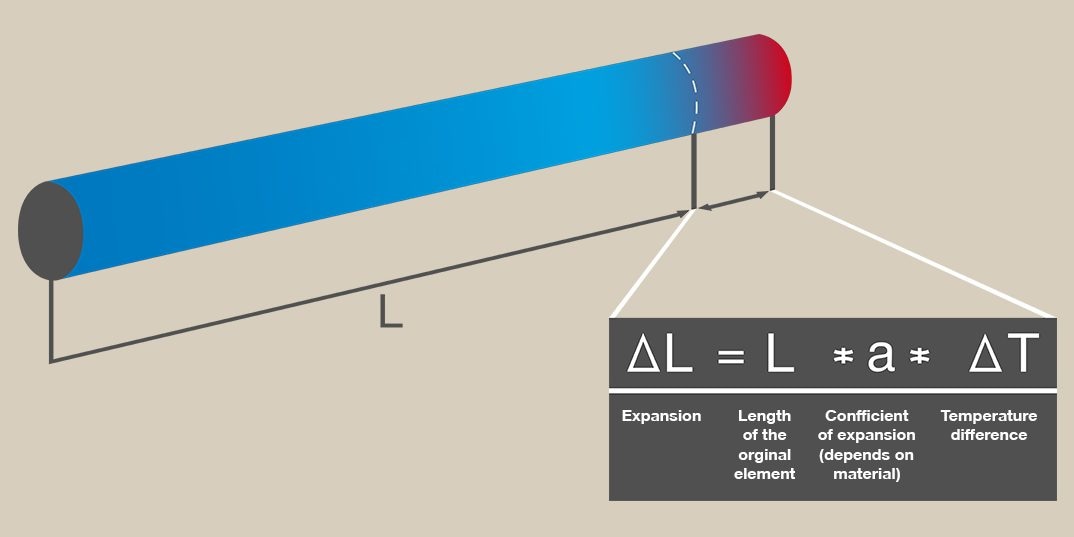- Home
- Solutions
- Solutions
- Modular Support Systems
- Design Guidelines
- Thermal Expansion Design
HOW TO DESIGN FOR THERMAL MOVEMENT
Thermal expansion design

If you’re building piping applications then it’s vital to bear in mind thermal expansion – particularly for heating applications.
This is because you will need to allow the pipes to expand and to ensure a uniform distribution of how the pipes move.
WHAT CAUSES THERMAL EXPANSION?
Thermal expansion depends on a few key factors:
- The original length of the section of pipe
- The coefficient of expansion
- The temperature difference
This is usually the change in temperature between the operational temperature of the pipe and the temperature outside. So, for instance for heating applications, the operational temperature would be around 70 °C and the ambient temperature typically 20 °C.
WHICH DESIGN SHOULD I USE FOR THERMAL EXPANSION?
-

1 - Fixed point
A fixed point solution stops any movement and transfers the loads to the superstructure of the building. The “zero movement” point allows you to calculate expansion and predict its behavior.
More information
2 - Axial guidance
Axial guidance is typically used very close to any technical compensation. It allows controlled movement in only one direction and it eliminates other directional movement.
More information
3 - Sliding support
Sliding support lets the pipe compensate on the lowest possible friction factor.
More information
4 - Free movement
Free movement works for situations where there is multidirectional movement. This is typically used on the arms of compensation.
More information
TIPS WHEN DESIGNING FOR THERMAL EXPANSION
- Calculate the length of expansion as a function of the length of the pipe, the pipe material and the temperature gradient.
- Check if the displacement between the pipe axis and the upper channel surface is more than 4°. If so, you’ll need a compensation solution. Please note that application-specific requirements may affect the amount of permitted displacement.
- Choose between natural or technical compensation, taking into account the amount of space required for each solution.

